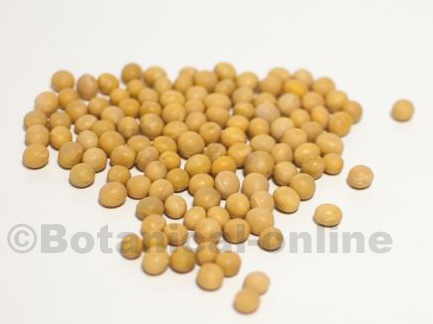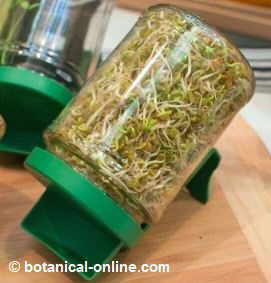Contents
Can soy be toxic?
When is soy toxic?
Non-germinated raw soybeans are toxic because they contain the following components with toxic properties for the body:
– Saponins
– Enzyme inhibitors (trypsin and other)
– Lectins (soyin or soy hemagglutinin)
– Antithyroid Factors
 Photo of soybeans |
How soy toxicity is eliminated?
Soy toxicity is removed by boiling the grain until completely cooked.
Germinated soybean loses toxicity and can be eaten raw.
What can happen to a person after eating raw soy?
Among the reactions that saponins can produce, we have: vomiting, stomach pain, bleeding, dizziness, ulcers, etc..
Once passed into the blood, they can damage the kidneys and liver and affect the nervous system and can cause cardiac arrest.
Lectins affect the red blood cells. They can cause muscle spasms, cramps, diarrhea, bloody stools. etc.
 Raw germinated soybeans are not toxic. Germination process gets rid off poisonous components |
Is raw soy also poisonous to animals?
Fish and insects are affected by soy toxicity. Among farm animals, sheep and cows are not affected by eating this type of legume.
Birds are poisoned showing abnormalities in the pancreas, thyroid and liver.
Death sometimes occurs in animals due to lack of nutrients since enzyme inhibiting factors get the intestine not to be able to digest food properly.
In order to soy not to affect to animals, it must be treated with heat, ultraviolet rays or oxidation.
* Related information:
![]() More information on soy and derivatives.
More information on soy and derivatives.








